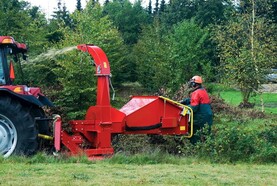A welcome addition to Targeted Agriculture Modernisation Schemes (TAMS) around two years ago was the inclusion of fencing for equines (horses, ponies and donkeys). To qualify under the TAMS equine element, applicants must have a minimum 5ha submitted under their Basic Income Support for Sustainability (BISS) scheme applications, as well as a minimum of three equines declared on the equine census or equivalent on the year preceding application.
Fencing for equines covered under the scheme include:
Post and rail fences. Rope and tape fences. Specialised horse chain link fence.White polymer monofilament fencing. Electrified high-visibility plastic-covered horse wire. Proprietary PVC post and rail fencing.Some steel estate railing is covered under the post and rail category, but it is worth confirming with the Department if your intended supplier is qualified. Some changes were recently added to the specifications surrounding Specialised horse chain link fence, which are detailed here.
Horse link fence
Intermediate post for specialised horse wire fencing should be at least 2,100mm long and a minimum of 125mm diameter or at least 2,100mm long and a minimum of 150mm x 75mm rectangular section. A minimum of 1,500mm shall be above ground and a minimum of 600mm shall be below ground. The maximum spacing of intermediate posts cannot exceed 2,700mm where a top board is fitted and shall be spaced so that top boards do not need to be cut on site.
Where a top board is replaced by 2.5mm-high tensile wire or flexible rail the intermediate post spacing may be increased to 4m. Strainer posts shall be at least 2,700mm long and shall be at least 180mm diameter. A minimum of 1,500mm should be above ground and a minimum of 1,200mm shall be below ground. Strainer posts shall be spaced at a maximum of 150m. In soft ground, the strainer length may have to be increased to provide the necessary stability. Strainers shall be provided at the beginning and end of every length of fencing, at gaps or openings, at every change of direction where the angle is greater than 30º and to accommodate any significant change in gradient. Timber top boards shall be no longer than 5,400mm long and at least 175mm x 38mm. Timber top boards may be replaced with flexi rails as specified in section F.2.1.3.
The top board should be located at the top of the fence posts, and the specialised horse wire, must be brought up from ground level to within 225mm of the top rail, flexible rail or high-tensile wire. The lowest line of the specialised horse wire shall be between 50mm and 100mm above ground level.
Reference costs
Reference costs are as listed in table 1, and are relatively generous. As with other schemes, those eligible for the Women Farmers, Young Farmers or Organic Capital Investment Scheme will be eligible for a higher grant rate of 60%, with all other categories eligible for just 40%.
A welcome addition to Targeted Agriculture Modernisation Schemes (TAMS) around two years ago was the inclusion of fencing for equines (horses, ponies and donkeys). To qualify under the TAMS equine element, applicants must have a minimum 5ha submitted under their Basic Income Support for Sustainability (BISS) scheme applications, as well as a minimum of three equines declared on the equine census or equivalent on the year preceding application.
Fencing for equines covered under the scheme include:
Post and rail fences. Rope and tape fences. Specialised horse chain link fence.White polymer monofilament fencing. Electrified high-visibility plastic-covered horse wire. Proprietary PVC post and rail fencing.Some steel estate railing is covered under the post and rail category, but it is worth confirming with the Department if your intended supplier is qualified. Some changes were recently added to the specifications surrounding Specialised horse chain link fence, which are detailed here.
Horse link fence
Intermediate post for specialised horse wire fencing should be at least 2,100mm long and a minimum of 125mm diameter or at least 2,100mm long and a minimum of 150mm x 75mm rectangular section. A minimum of 1,500mm shall be above ground and a minimum of 600mm shall be below ground. The maximum spacing of intermediate posts cannot exceed 2,700mm where a top board is fitted and shall be spaced so that top boards do not need to be cut on site.
Where a top board is replaced by 2.5mm-high tensile wire or flexible rail the intermediate post spacing may be increased to 4m. Strainer posts shall be at least 2,700mm long and shall be at least 180mm diameter. A minimum of 1,500mm should be above ground and a minimum of 1,200mm shall be below ground. Strainer posts shall be spaced at a maximum of 150m. In soft ground, the strainer length may have to be increased to provide the necessary stability. Strainers shall be provided at the beginning and end of every length of fencing, at gaps or openings, at every change of direction where the angle is greater than 30º and to accommodate any significant change in gradient. Timber top boards shall be no longer than 5,400mm long and at least 175mm x 38mm. Timber top boards may be replaced with flexi rails as specified in section F.2.1.3.
The top board should be located at the top of the fence posts, and the specialised horse wire, must be brought up from ground level to within 225mm of the top rail, flexible rail or high-tensile wire. The lowest line of the specialised horse wire shall be between 50mm and 100mm above ground level.
Reference costs
Reference costs are as listed in table 1, and are relatively generous. As with other schemes, those eligible for the Women Farmers, Young Farmers or Organic Capital Investment Scheme will be eligible for a higher grant rate of 60%, with all other categories eligible for just 40%.






 This is a subscriber-only article
This is a subscriber-only article










SHARING OPTIONS: